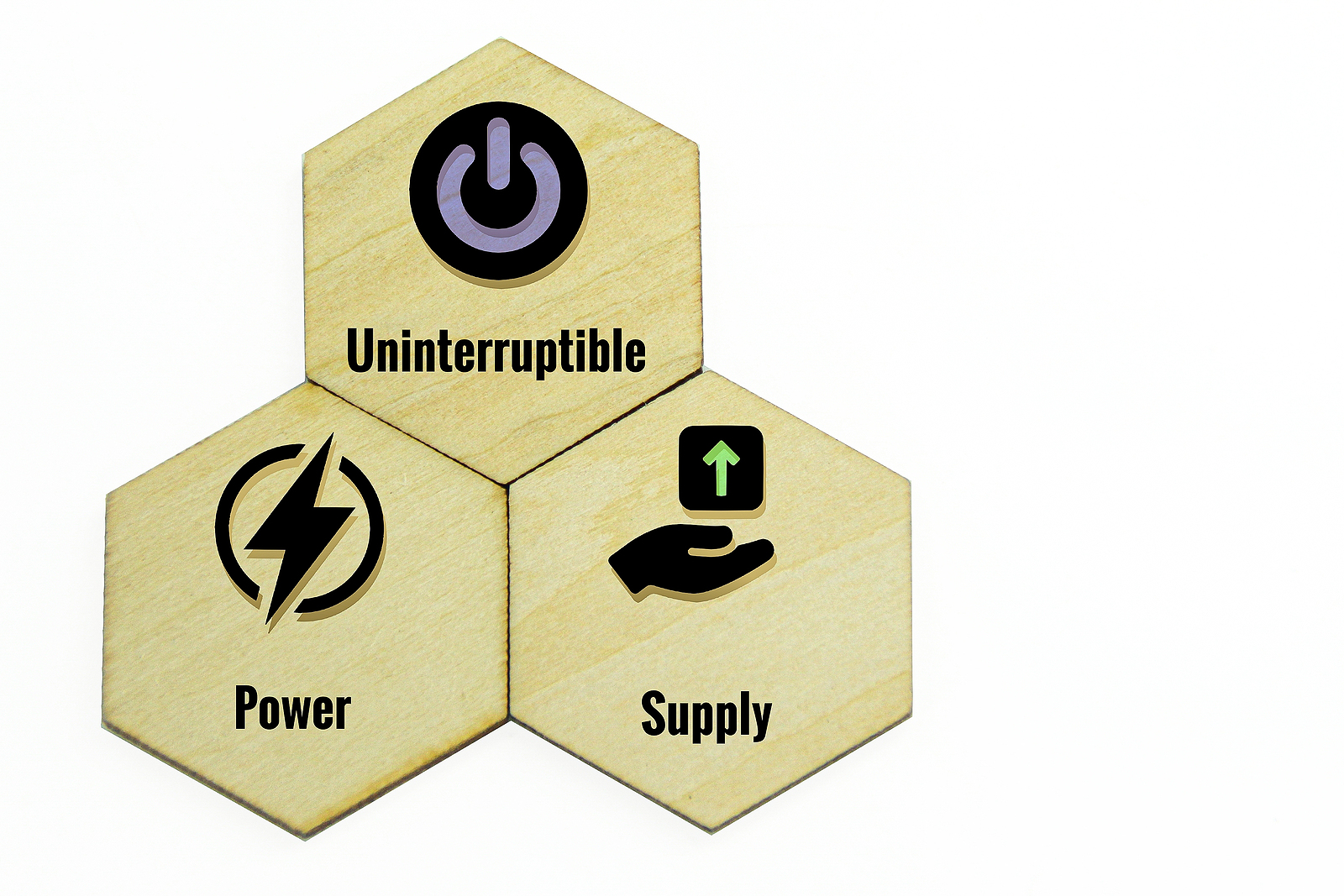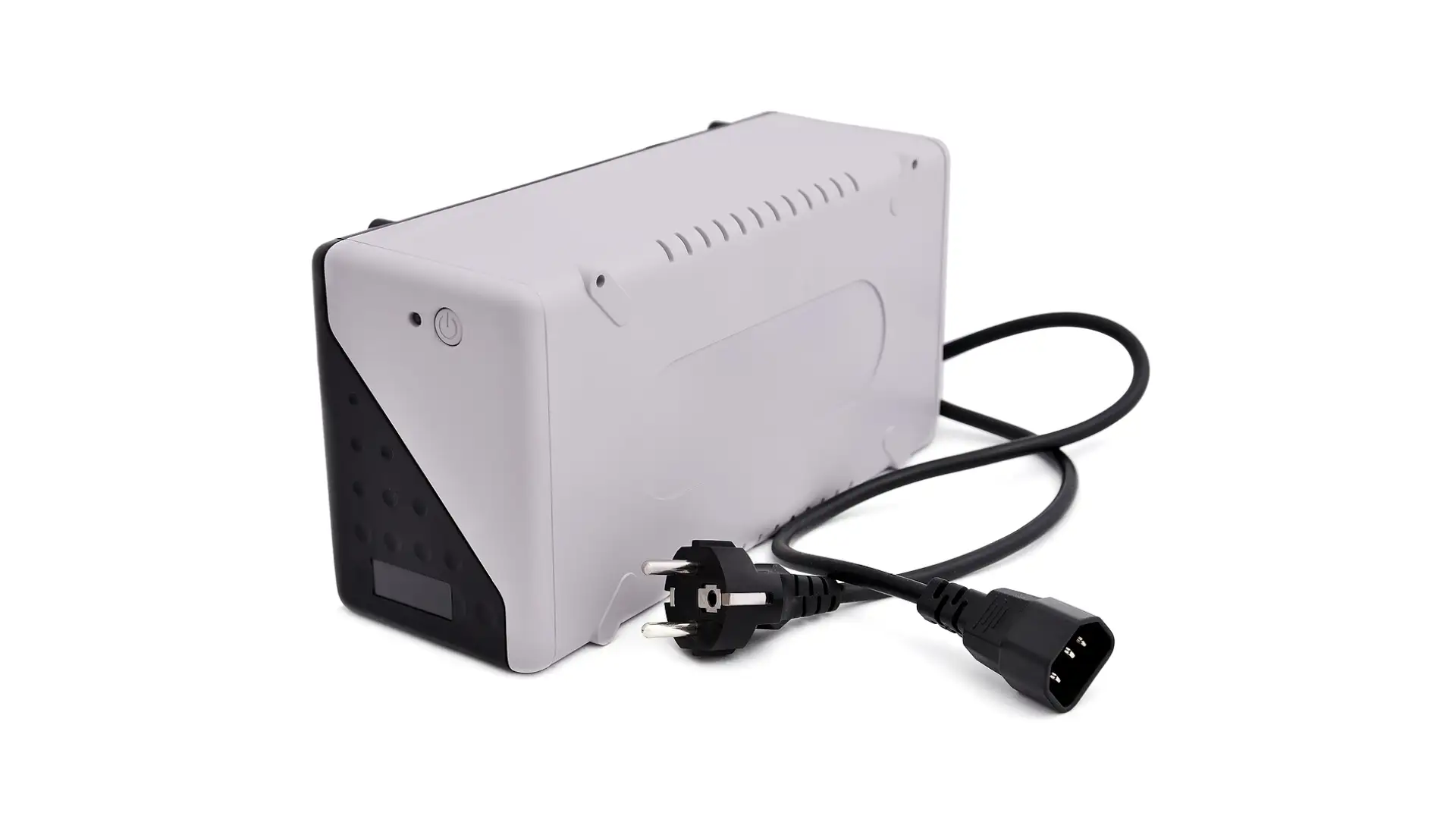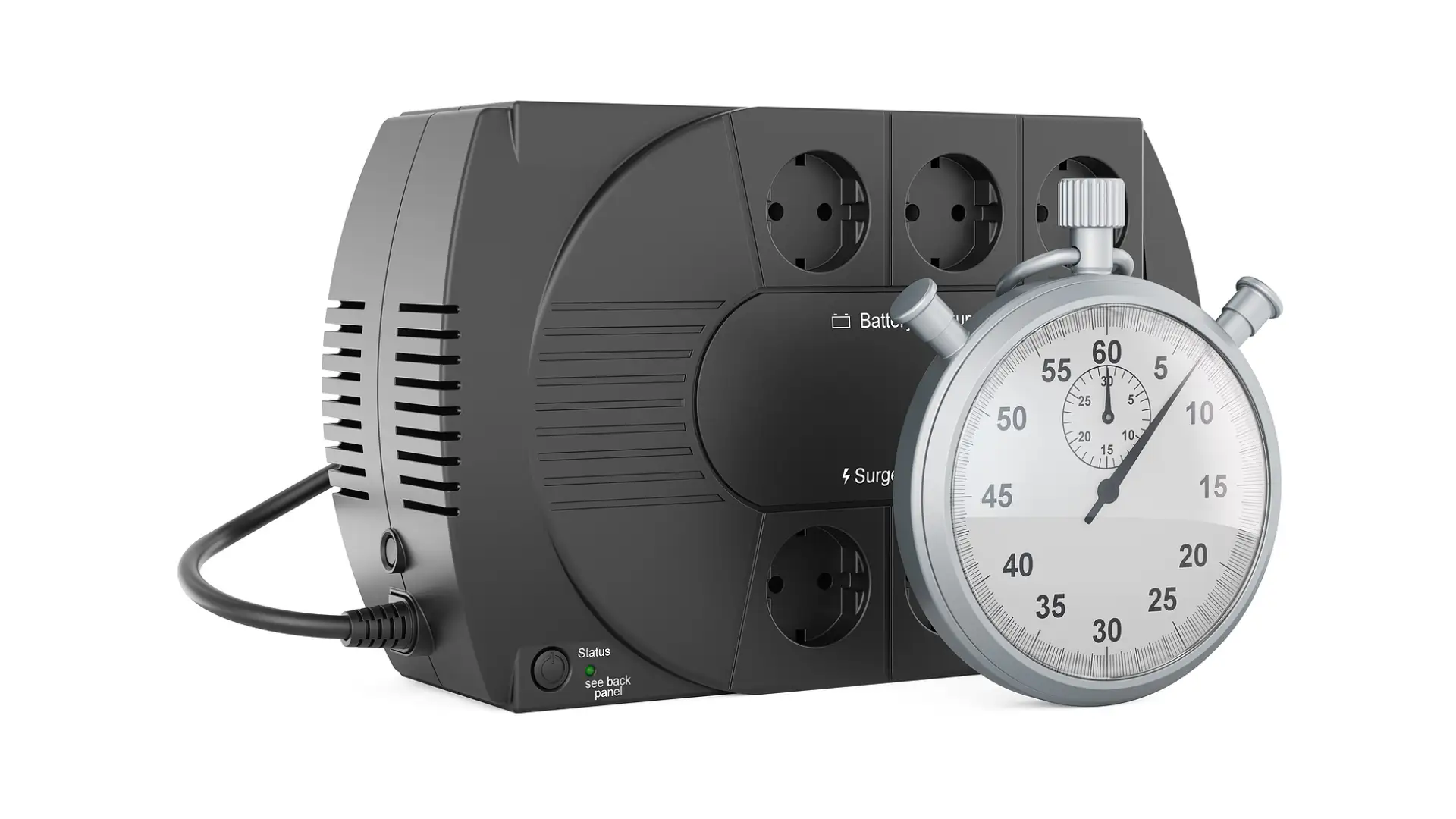
The Function of Uninterruptible Power Supply
In today's fast-paced world, we're more dependent on technology than ever. I can't imagine a day without my computer, smartphone, or Wi-Fi. But all these gadgets are only as good as the power fueling them. That's where an Uninterruptible Power Supply (UPS) comes in.
In this article, I'm going to give you an in-depth look at UPS systems, breaking down how they work and why they're the unsung heroes keeping our digital lives running smoothly. Trust me, by the end, you'll see why I think this piece of tech is absolutely essential.
Introduction to UPS
An Uninterruptible Power Supply (UPS) serves as a vital electrical apparatus designed to deliver uninterrupted power in instances where the primary power supply experiences failure or disruption. Functioning as a pivotal intermediary component, the UPS plays a pivotal role in maintaining the continuity of power-sensitive systems during unforeseen outages.
When conventional power sources encounter interruptions, whether due to grid failures, voltage fluctuations, or other issues, the UPS swiftly activates to supply power seamlessly to connected equipment. This safeguarding mechanism prevents critical systems from experiencing abrupt shutdowns or data loss, thereby enhancing operational stability and averting potential financial or operational ramifications that could arise from power-related disruptions.
By serving as a resilient link between the primary power infrastructure and essential electronic devices, the UPS contributes significantly to maintaining productivity, preventing information loss, and mitigating the risk of hardware damage.

Primary Functions of a UPS
An Uninterruptible Power Supply (UPS) system is crucial for ensuring continuous power supply to electronic devices, especially during unexpected interruptions in the main power source. Below is an in-depth examination of its core functions:
Instantaneous Power Supply
One of the standout features of a UPS is its ability to detect any slight interruptions or drops in the main power source. The moment such an interruption occurs, the UPS immediately kicks in. This seamless transition is so swift that connected devices often remain operational without any noticeable disruption, thereby preventing potential data loss or damage.
Voltage Stability
Electronic devices can be sensitive to fluctuations in power, especially voltage variations. A sudden spike or drop in voltage can inflict irreparable damage to the internal components of these devices. To counter this, a UPS system ensures that the voltage supplied to the attached devices remains consistent. By doing so, it helps in preventing harmful surges or drops that can compromise the longevity and functionality of electronic devices.
Battery Backup
At the heart of a UPS system is its battery backup mechanism. This feature ensures that even during prolonged power outages, the UPS can draw power from its stored energy, often housed in batteries. Depending on the capacity and specifications of the UPS, this backup can last from a few minutes to several hours, allowing users to save work, safely shut down systems, or keep essential devices running.
Protection from Power Surges
Electrical surges, often caused by lightning, faults in the power grid, or switching of large electrical devices, can lead to an abrupt increase in voltage. Such surges, even if they last for a fraction of a second, have the potential to destroy electronic equipment. The UPS is designed to detect and regulate these surges. By controlling or dampening these spikes, the UPS ensures that the devices connected to it remain safe and protected from potential harm.
Different Types of UPS Systems
Uninterruptible Power Supply systems are designed to address varying power requirements and challenges. Their configurations differ based on how they interact with the main power supply and backup batteries. Let's delve deeper into the three primary types of UPS systems:
Standby (Offline) UPS Systems
This kind of UPS operates predominantly using the main power source until there's an interruption. The name “Standby” or “Offline” signifies its mode of operation – it essentially waits in the shadows. Only when a power outage occurs does the Standby UPS transition to draw power from its internal battery.
This switch happens swiftly to ensure continuity in the power supply, although there might be a very brief delay, typically a few milliseconds.
Line-interactive UPS Systems
The unique selling point of the Line-interactive UPS is its ability to handle minor power fluctuations without immediately resorting to its battery reserve. The system employs a multi-tap variable-voltage autotransformer. In simpler terms, this transformer can adjust the voltage up or down slightly to counteract minor under-voltage (brownouts) or over-voltage surges.
By doing this, the Line-interactive UPS can preserve its battery life for when it's genuinely needed, like during a complete power failure.
Online UPS (Double Conversion) Systems
An Online UPS, also known as Double Conversion UPS, offers the highest level of protection to attached equipment. Unlike the previous two, this UPS is always engaged. How does it achieve this? The system continually draws power from its battery while concurrently recharging the battery from the main power source.
This double conversion – first converting the incoming AC power to DC to charge the battery and then converting it back to AC to power the connected devices – creates an “electrical firewall”.
This firewall serves as a robust barrier, ensuring that the sensitive electronic equipment receives a clean, consistent, and uninterrupted power supply, free from common power anomalies.
How a UPS Works: The Technical Details
An Uninterruptible Power Supply (UPS) is an intricate piece of technology that goes beyond merely providing backup power during outages. It has a multi-faceted approach to ensuring uninterrupted power supply to your devices. Let's delve deeper into the step-by-step process of how a UPS operates:
Normal Mode (Standby Mode)
In the typical operating scenario, when the main power source is stable, the UPS primarily plays a passive role. During this period, it does two things:
-
- Battery Charging: The UPS, while connected to the main power supply, ensures its internal batteries remain fully charged and ready to take over in case of an emergency.
- Voltage Monitoring: Simultaneously, the UPS keeps a vigilant eye on the quality and stability of the main power source. It uses advanced circuits to monitor for any voltage sags, spikes, or other inconsistencies which could harm connected devices.
Detection (Surveillance Phase)
The UPS isn't just idly waiting; it is actively and continuously scanning the incoming power for any irregularities. If it detects an abnormality such as a sudden drop in voltage (brownout) or a harmful surge, it immediately gears up for a potential power handover.
Transition (Switchover Phase)
The real magic happens within milliseconds after a power outage or inconsistency is detected. With incredible swiftness, the UPS transitions from the main power source to its internal battery. This near-instantaneous switch ensures that the devices connected to the UPS experience zero downtime, preventing data losses or abrupt shutdowns.
Battery Mode (Backup Phase)
In this emergency mode, the UPS begins supplying power sourced directly from its batteries to the connected devices. The duration for which a UPS can sustain this mode largely depends on the battery's capacity and the total power draw of the connected equipment. This phase continues until one of two things happen: either the main power source is restored or the UPS batteries are entirely drained.
Recharging and Restoration
As soon as the main power source stabilizes and returns, the UPS promptly switches back from its battery mode to the normal mode. But its job isn't over yet. Recognizing the dip in its battery reserves, the UPS immediately begins the process of recharging its batteries, ensuring they're fully charged and ready for any subsequent outages.
Benefits and Uses of a UPS
The Uninterruptible Power Supply (UPS) systems are integral in today's technologically driven environment, not just for their primary function of power backup but for a plethora of other benefits they bring to both businesses and individuals. Here's a comprehensive list that incorporates the earlier mentioned benefits and introduces new ones:
Prevention of Data Loss
Data is often termed as the ‘new gold' in our digital era. A power interruption can mean unsaved data disappearing into the void, translating into potential financial losses and countless hours of work undone. By offering crucial buffer time, a UPS ensures that businesses and individuals have the opportunity to save their work and secure essential data.
Protection for Sensitive Equipment
Precision devices, be it in the realm of medical diagnostics, IT servers, or scientific research, are often vulnerable to power inconsistencies. A UPS not only safeguards these machines from power surges or drops but also extends their lifespan by providing a consistent power supply, ensuring their continual optimal performance.
Enhanced Peace of Mind
The assurance of having a backup power system, especially in regions susceptible to frequent power disruptions, cannot be understated. With a UPS in place, there's a tangible reduction in the stress of losing unsaved work or facing equipment breakdown.
Energy Efficiency
- Modern UPS systems often come equipped with energy-saving features. They can optimize power usage, ensuring that connected devices only draw the required power, leading to potential savings in electricity costs over time.
Operational Continuity
For businesses, especially those that operate 24/7 like call centers or online services, any disruption can translate into financial loss and dissatisfied customers. UPS systems guarantee that these operations continue seamlessly, even during power hiccups.
Advanced Monitoring and Alerts
Many contemporary UPS systems come with monitoring software. This allows users to track the health, battery life, and performance of the UPS. Any potential issues can be detected early, ensuring proactive maintenance and reducing unexpected downtime.
Cost Savings
In the long run, having a UPS can lead to considerable cost savings. By preventing potential damages to equipment from power fluctuations and minimizing data loss-related setbacks, businesses can avoid unplanned expenses.
Environmental Protection
Certain UPS systems are designed with eco-modes, which not only save power but also reduce heat generation. This contributes to a lower carbon footprint, making them an environmentally friendly choice.
FAQs about Uninterruptible Power Supply (UPS)
What is a UPS and why is it essential?
A UPS, or Uninterruptible Power Supply, is a device that provides emergency power to connected equipment when the main power source fails. It's vital to ensure continuity of operations, protect sensitive equipment, and prevent data loss during power disruptions.
How quickly does a UPS react to a power interruption?
A UPS responds almost instantaneously, often within milliseconds, ensuring that connected devices experience virtually no downtime.
Do all UPS systems work in the same way?
No, there are different types of UPS systems, such as Standby (Offline), Line-interactive, and Online (Double Conversion) UPS systems. Each has its unique way of interacting with the main power supply and backup batteries.
How long can a UPS provide backup power during an outage?
The backup duration of a UPS depends on its battery capacity and the total power consumption of the connected devices. Some systems provide power for a few minutes, while others can last several hours.
Is a UPS only useful during complete power outages?
No, a UPS also plays a vital role in regulating minor power fluctuations and surges, ensuring connected devices receive consistent voltage.
How does a UPS extend the lifespan of connected devices?
By ensuring a stable and consistent power supply, a UPS can protect sensitive electronic equipment from harmful voltage spikes, drops, or other inconsistencies, thus prolonging their operational lifespan.
Can a UPS help in energy savings?
Yes, many modern UPS systems come with energy-efficient features that optimize power usage, leading to potential electricity cost savings.
How can I monitor the performance and health of my UPS?
Many contemporary UPS systems come equipped with monitoring software, allowing users to track various aspects, including battery life and overall performance.
Are there environmentally friendly UPS options available?
Yes, some UPS systems feature eco-modes that not only save power but also reduce heat generation, contributing to a lower carbon footprint.
Why is data often referred to as the ‘new gold' in relation to UPS systems?
In the digital era, data is invaluable. Power interruptions can lead to unsaved data being lost, which can translate to significant financial or operational losses. A UPS provides a buffer to save and secure this data during outages.
Final Thoughts
In my journey through the tech-driven world, few things have struck me as deeply essential as a UPS. We often invest heavily in our devices – be it computers, servers, or cutting-edge equipment – yet tend to overlook the vital lifeline that powers them. I've personally experienced the regret of losing hours of work due to unexpected power interruptions. But since integrating a UPS into my setup, not only have I safeguarded my data but have also extended the longevity of my devices.
Beyond just serving as a backup during blackouts, the UPS, to me, symbolizes the assurance of continuity in a volatile world. For anyone deeply embedded in the digital realm, this is more than just a piece of tech; it's a silent guardian of our digital treasures. Investing in a UPS is not just a choice; it's a nod to the importance we place on the seamless flow of our digital lives.
Sources
continue reading
Related Posts
Uninterruptable Power Supply Company In my daily life, both personally […]
Uninterruptable Power Supplies In today's world, where technology keeps us […]
Uninterruptible Power Supply For Laptop In today's fast-paced digital world, […]



